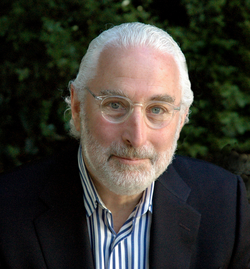In a speech he gave late last year at the IFRRO Business Models Forum, in Mexico City, Goldstein described a “great and worldwide battle (…) between the compensated use of copyrighted works and the free use of these works”. The outcome of this struggle, he predicted, would “alter the structure of copyright law, copyright industries and copyright institutions for at least the remainder of the present century”.
In your speech you described a global shift toward the adoption of fair use, and more exceptions and limitations to copyright protection. What are the factors driving this shift?
“Several factors explain the global shift toward fair use, not only among the common law countries, that might have been viewed as more hospitable to such a shift, but among the civil law – author’s right – countries as well. One reason is connected to the culture of fast, cheap and perfect digital reproduction: the new and false appearance to consumers that information is free has led some policymakers to conclude that information should be made free and left unfettered by copyright tollgates. Add to this the growing – and global – clout of internet companies whose profits would suffer from the interposition of copyright tollgates, and the popularity of empirical literature questioning the need for copyright to provide incentives for cultural production, and you have a perfect policy cocktail for fair use and other limitations on copyright.”
You point out that “transformative use” has become the governing rationale for fair use. Please explain that concept, how it has changed, and the effects of that change?
“The concept of “transformative use” in American law started in a 1994 Supreme Court decision validating parody as a legitimate form of fair use. The thought behind the decision was that by altering a copyrighted work in a manner that at the same time comments on the work, parody serves important and widely-regarded cultural values. French copyright law, one of the national laws more respectful of authors’ rights, has for this reason long provided a robust exception for parody.
“The doctrine subsequently took an unfortunate turn as lower courts applied the “transformative” label to uses that, unlike parody, neither alter the copyrighted work nor comment on it. The Google Books decision, characterizing the digitization of millions of copyrighted works as “transformative” is an example. Of course, nothing of consequence was “transformed” in the case, and the court effectively used the term as a placeholder for its concept of public benefit. Yet, few uses of copyrighted works fail to yield some public benefit and, if that becomes the measure of fair use, the prospects for a working copyright system are not bright.”
What are the origins of America’s distaste for collective licensing? Are there examples where that view has inhibited licensing mechanisms that might have avoided fair use disputes or the expansion of fair use?
“It would be fascinating for a cultural historian to get a handle on the question of the sources of America’s profound distaste for collectives and collective licensing. It may have something to do with the hoary frontier myth of rugged individualism, but, whatever its source, the absence of collective responses to certain recurring copyright dilemmas helps to explain the growth of one busy corner of fair use in the US. Where, for example, Germany could resolve the problem of payment for home videotaping by imposing a levy on home recording equipment, and distributing the proceeds through the interested collecting societies, the US, without any comparable collecting and distribution mechanism, naturally turned to fair use as a copyright safety valve. The same story played out with photocopying. The great irony of fair use doctrine’s spread outside the US is that countries that don’t need the doctrine’s safety valve because they have a robust collective culture are turning to it anyway.”

